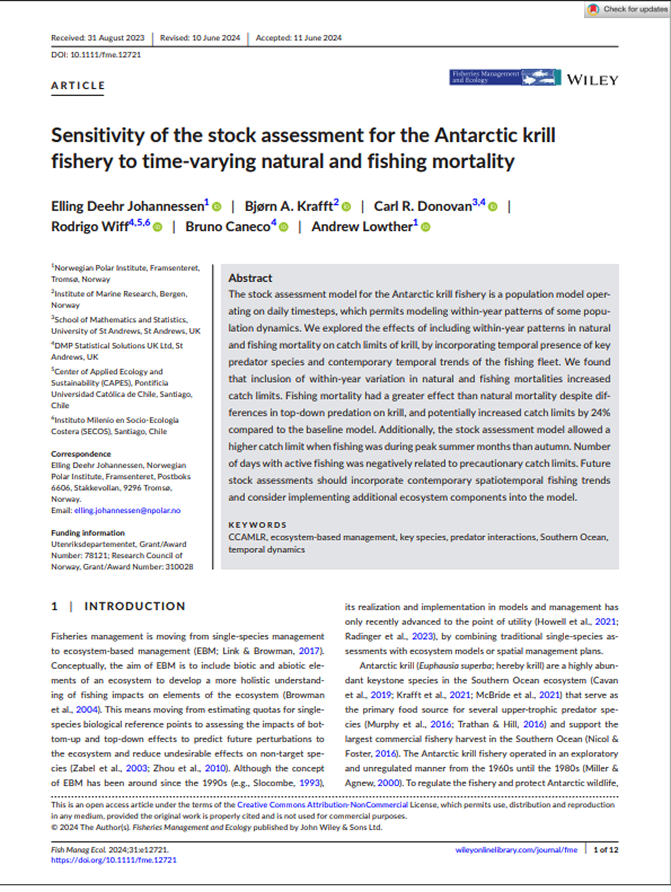Antarctic ecosystem
Fisheries management
Biomass
Climate
Krill (Euphausia superba)
Observing change in pelagic animals as sampling methods shift: the case of Antarctic krill
Summary
This comprehensive review addresses the challenges of monitoring Antarctic krill populations. These challenges arise as sampling methods shift from traditional research ship surveys to newer technologies like autonomous underwater platforms, robotic gliders, and genetic analysis techniques. While newer methods offer benefits in cost-effectiveness and reduced environmental impact, they operate over smaller geographic areas, potentially missing large-scale ecological changes.
A workshop of 137 krill experts identified three key solutions: better comparison and calibration between traditional and new methods, improved coordination of localized sampling programs, and expanded use of commercial fishing industry data.
The review highlights ongoing scientific debates about whether krill populations are declining or remaining stable, emphasizing that the ability to detect population trends depends heavily on the geographic scale and time duration of sampling efforts. Given rapid environmental changes in the Southern Ocean, the authors recommend adaptive fishery management that prioritizes continuous population monitoring over reliance on historical reference points.
A workshop of 137 krill experts identified three key solutions: better comparison and calibration between traditional and new methods, improved coordination of localized sampling programs, and expanded use of commercial fishing industry data.
The review highlights ongoing scientific debates about whether krill populations are declining or remaining stable, emphasizing that the ability to detect population trends depends heavily on the geographic scale and time duration of sampling efforts. Given rapid environmental changes in the Southern Ocean, the authors recommend adaptive fishery management that prioritizes continuous population monitoring over reliance on historical reference points.

1
The figure shows sea ice changes and krill sampling patterns in the Southern Ocean. Panel A displays significant changes in sea ice concentration from 1978-2021, with red/orange areas showing ice loss and blue showing increases. The Antarctic Peninsula region shows dramatic ice decline. Panel B illustrates krill research effort (gray rings) and average krill density (colored rings) across different sectors. The Southwest Atlantic sector (pink) has received the most research attention and shows high krill densities, making it the primary focus for both scientific studies and commercial fishing. Key Findings
1
raditional research ship surveys are declining while new technologies (underwater platforms, robotic gliders, genetic analysis) operate over smaller geographic areas.2
Scientific debate continues over krill population trends in the Southwest Atlantic, with different conclusions depending on the sampling method, time period studied, and geographic coverage. 3
A workshop of 137 experts identified three critical solutions: better calibration between old and new methods, improved coordination of localized sampling programs, and expanded use of commercial fishing industry data.4
There is risk of both missing real population changes and incorrectly detecting false trends due to mismatches between sampling scales and the vast geographic range of krill populations.5
Current fishery management relies on outdated survey data from 2000. Experts recommend a fundamental shift towards a fishery management approach that prioritizes ongoing monitoring of stock status and can adapt to variability and change in krill populations.

